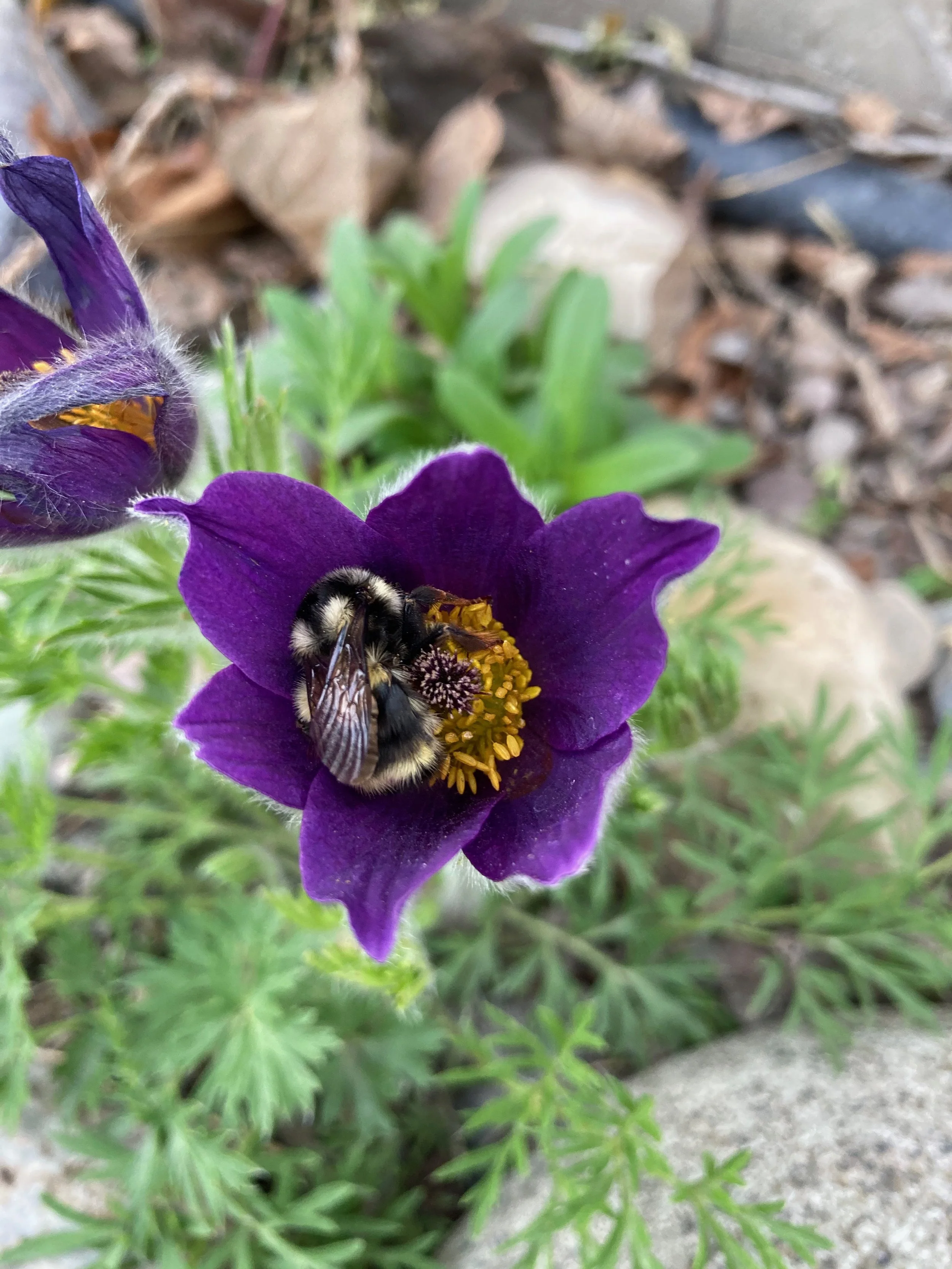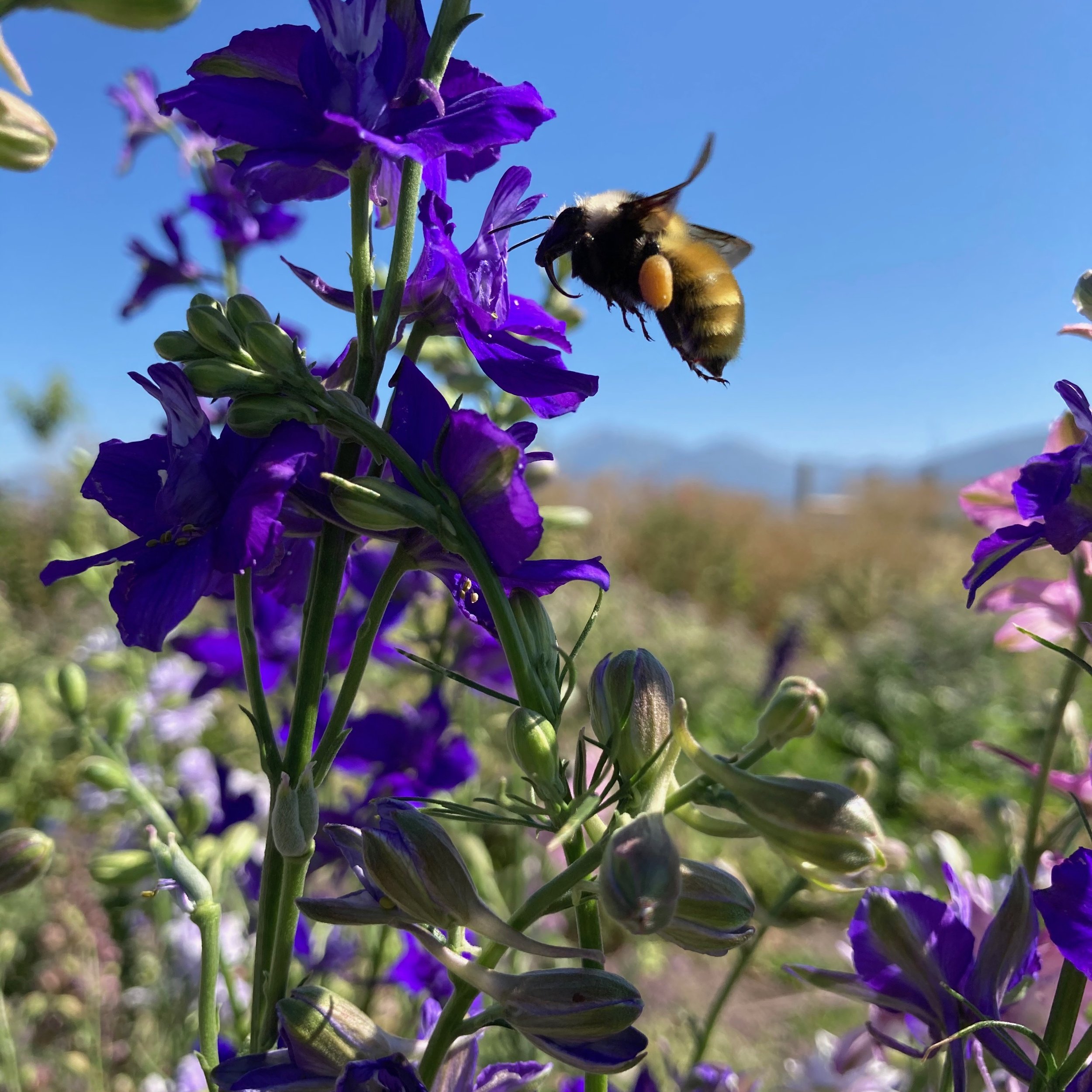Full Disclosure: I am kind of a geek. A pollinator geek. It started innocently enough. As a little girl, running wild in rural Vermont, I was drawn to the fields of daisies, black-eyed Susans, stinking bob and queen Anne’s lace. Consequently, I became acquainted with the bees and butterflies that frequented the same fields. Color, shape, movement—it was all very magical to me. I remember running at top speed, through the head-high grasses and flowers one day, mouth agape (either in joy or breathlessness, who knows) and suddenly feeling the furry, bulky buzz of a bumble bee between my bottom lip and teeth. We both came out of that incident unscathed, and I remembered to close my mouth after that. But I didn’t like the bees any less. In fact, my curiosity only grew from there. Perhaps it was on that day that they became more of me, and I, more of them.
I love farming flowers because I am obsessed with beauty and making people smile, and showing people that they are loved. But I don’t farm flowers just for the flowers or the people, alone. It’s for the relationship with the natural world, the interconnectedness and the partnership—a partnership with countless living creatures that inhabit this land—and pollinators are integral to that. We chose flowers, in part, because we wanted to support our ecosystem and our partners in this ecosystem—and by doing so, we support our food systems, and access to daily connection and joy. Meridian isn’t simply a farm, it is a sanctuary—and by supporting pollinators, we are fostering refuge for anyone who comes in contact with us.
Over the last five years, we have steadily increased pollinator habitat on the farm, with the aim of truly creating a pollinator sanctuary. How?
Each season, we identify a new area at the farm where we want to plant native and pollinator friendly plants, exclusively for the pollinators. That means that we don’t harvest in these areas, and that we usually set up a place for people to observe the pollinators without disturbing them.
We continue to plant trees that provide food and habitat for pollinators.
We harvest flowers at a time of day when pollinators are less active, and examine every bloom to make sure it doesn’t go into the cooler with any hitchhikers.
In our growing fields, we plant more and more pollinator positive varieties each year, including perennial crops that provide habitat year-round.
We often don’t cut back certain varieties of plants in the fall, so they can continue to provide food and shelter in the colder seasons.
We minimize attractants to areas where nesting insects might be in conflict with human activities.
We minimize use of chemicals and utilize organic practices to avoid putting pollinators in peril.
We continuously pursue and support conservation funding and education to help support these efforts.
We look for opportunities to provide education about pollinators on the farm, so stay tuned!
Want to support our efforts? Check out Peonies for Pollinators.
Peonies for Pollinators
This is our CSA program that we do in partnership with Montana Natural History Center. A portion of our sales goes to MNHC to support their programs, and of course, we also use some of the proceeds to expand our pollinator sanctuary.

